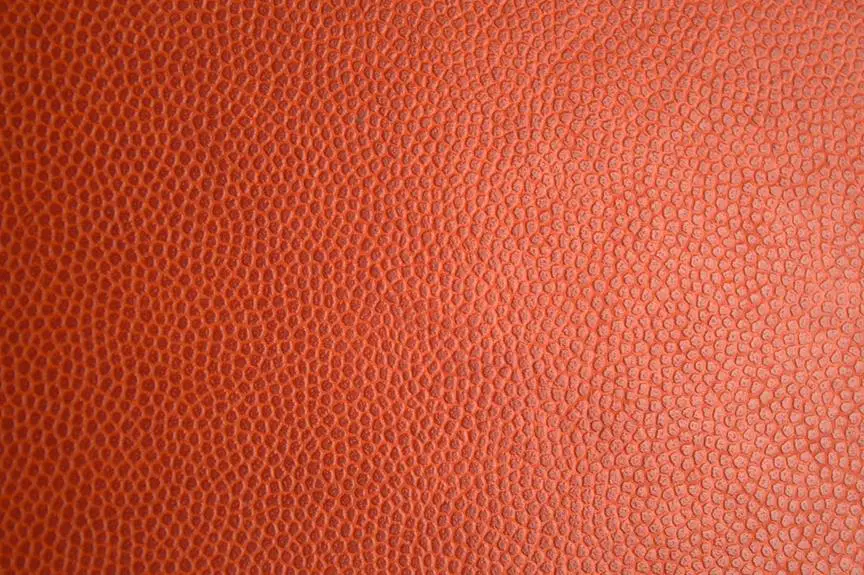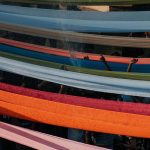Curious about the waterproof capabilities of PU leather? You may be surprised to learn that not all PU leather is inherently waterproof.
In this expert guide, we'll delve into the composition of PU leather, explore its water-resistant qualities, and uncover the factors that affect its waterproofness.
Armed with this knowledge, you'll gain mastery over understanding how to care for and maintain PU leather to ensure its longevity and water resistance.
By the end, you'll have a clear understanding of PU leather's real-life waterproof performance and how it compares to other materials.
Let's dive in and unravel the truth about PU leather's waterproof properties.
Key Takeaways
- PU leather is composed of a flexible polymer coating that provides durability and versatility.
- PU leather exhibits excellent resistance to water due to its chemical composition and seam sealing.
- Factors such as composition, surface treatment, and manufacturing process influence the waterproofness of PU leather.
- Regular maintenance, such as wiping down with a damp cloth and applying waterproofing treatment, helps maintain PU leather's water resistance.
Understanding PU Leather Composition
Do you know what materials make up PU leather? Understanding the chemical composition of PU leather is essential for appreciating its durability and quality.
PU leather, short for polyurethane leather, is made by coating a backing material such as fabric or split leather with a flexible polymer. This polymer is composed of organic units joined by urethane links, creating a material that's both durable and versatile.
The chemical composition of PU leather gives it the ability to resist wear and tear, making it a popular choice for various applications, including upholstery, clothing, and accessories.
By understanding the chemical composition of PU leather, you can appreciate its durability and longevity. The polymer coating provides a barrier that protects the backing material, enhancing its resistance to abrasions and scratches. This makes PU leather a practical and long-lasting option for items that endure frequent use.
Additionally, the chemical composition allows for a wide range of finishes and textures, giving PU leather the appearance and feel of genuine leather without sacrificing durability.
Understanding the chemical composition of PU leather is crucial for discerning consumers who seek high-quality, long-lasting materials.
Exploring Water-Resistant Qualities
The water-resistant qualities of PU leather make it an ideal choice for various applications, including outdoor furniture and accessories. When considering its water resistance, PU leather undergoes rigorous testing methods to ensure its reliability. Here are the key points to understand about PU leather's water-resistant qualities:
- Hydrophobic Properties: PU leather exhibits excellent resistance to water, making it suitable for outdoor use where exposure to moisture is common.
- Seam Sealing: The material's ability to prevent water penetration at seams and stitches enhances its overall water resistance, making it a popular choice for raincoats and outdoor gear.
- Durability: PU leather's water-resistant nature contributes to its durability, ensuring that it can withstand various weather conditions without deteriorating.
- Environmental Impact: While PU leather's water resistance is beneficial, it's essential to consider its environmental impact, particularly in terms of biodegradability and recycling.
- Sustainability: Ongoing research and development aim to improve PU leather's environmental footprint, seeking to minimize any negative impact associated with its water-resistant qualities.
Understanding these aspects can help you make informed decisions about utilizing PU leather in water-exposed applications while being mindful of its environmental impact.
Factors Affecting Waterproofness
Factors influencing the waterproofness of PU leather include its composition, surface treatment, and manufacturing process.
The material construction of PU leather plays a significant role in its waterproof properties. PU leather is made by coating a backing material, typically a fabric such as polyester, with a layer of polyurethane. The thickness and density of this polyurethane coating can affect how waterproof the material is.
Additionally, the surface treatment applied to PU leather can impact its ability to repel water. Treatments such as adding a topcoat or using specific chemical finishes can enhance the waterproofness of PU leather.
Environmental effects also play a crucial role in determining the waterproofness of PU leather. Factors such as temperature, humidity, and exposure to sunlight can affect the material's ability to repel water. PU leather that's subjected to extreme temperatures or prolonged exposure to UV radiation may experience changes in its structure, which can impact its waterproof properties.
Understanding these factors can help you make informed decisions about the appropriate use and care of PU leather products.
Maintenance and Care Tips
To maintain the waterproofness of your PU leather products, regularly wipe them down with a damp cloth and apply a waterproofing treatment annually. Proper care and maintenance are essential for ensuring the longevity and effectiveness of the waterproof properties of your PU leather items.
Here are some cleaning techniques and storage solutions to help you preserve the quality of your PU leather products:
- Regular Wiping: Wipe down your PU leather items with a damp cloth to remove any surface dirt or grime. This simple routine can prevent the buildup of debris that may compromise the waterproof properties.
- Waterproofing Treatment: Apply a specialized waterproofing treatment at least once a year to maintain the protective coating on your PU leather products. This will help to reinforce the waterproof barrier and keep your items resistant to moisture.
- Proper Storage: Store your PU leather items in a cool, dry place away from direct sunlight and heat sources. Avoid placing them in humid or damp environments to prevent the growth of mold and mildew.
- Avoid Harsh Chemicals: Refrain from using harsh cleaning agents or abrasive materials on your PU leather products, as these can strip away the waterproof coating and damage the material.
- Regular Inspection: Periodically inspect your PU leather items for any signs of wear or damage. Address any issues promptly to maintain their waterproof qualities.
Real-Life Waterproof Performance
When testing PU leather's waterproof performance in real-life situations, use a spray bottle to simulate exposure to water and observe any absorption or repelling of moisture.
Field testing is crucial to assess how PU leather holds up against water in practical scenarios. During field testing, carefully observe how the material reacts to water exposure.
Look for any signs of water absorption or beading, which indicates the level of waterproofing. Additionally, perform a durability assessment by subjecting the PU leather to prolonged exposure to water.
This can involve leaving the material out in the rain or exposing it to water for an extended period to gauge its ability to maintain its waterproof properties over time.
Comparing PU Leather With Other Materials
Comparing PU leather with other materials involves evaluating their waterproofing performance, durability, and aesthetic appeal. When considering durability, PU leather often outperforms genuine leather, especially in terms of water resistance and color retention. However, there are other eco-friendly options worth considering, such as:
- Cork Leather: This sustainable material is lightweight, water-resistant, and has a unique natural texture, making it a durable and eco-friendly alternative to PU leather.
- Pinatex: Made from pineapple leaf fibers, Pinatex is a cruelty-free and biodegradable material that offers good durability and water resistance.
- Microfiber Leather: This synthetic leather alternative is known for its durability, water resistance, and easy maintenance, making it a popular choice for those seeking eco-friendly options.
- Recycled Leather: By repurposing leather scraps and fibers, recycled leather offers good durability and water resistance while reducing waste and environmental impact.
- Hemp Fabric: Hemp is a strong and durable natural fiber that can be used as an eco-friendly alternative to leather, offering good water resistance and longevity.
Frequently Asked Questions
Can PU Leather Be Used for Outdoor Furniture?
PU leather is a great option for outdoor furniture due to its outdoor durability. It comes in a variety of color options, allowing you to customize your furniture to suit your style and outdoor aesthetic.
Is PU Leather Safe to Use in Marine Environments or Around Saltwater?
Yes, PU leather is safe for marine applications and shows good resistance to saltwater. It's a great choice for marine upholstery and boat interiors. Just ensure proper maintenance to prolong its lifespan in these environments.
Can PU Leather Be Used for Making Waterproof Bags or Backpacks?
You can use PU leather for making waterproof bags or backpacks. Its durability and aesthetics make it a great choice. However, ensure proper sealing and construction to prevent any water penetration.
What Is the Best Way to Clean and Maintain the Waterproof Qualities of PU Leather?
To maintain the waterproof qualities of PU leather, use gentle cleaning techniques like wiping with a damp cloth and mild soap. Avoid harsh chemicals. Long term maintenance involves regular cleaning and applying a protective leather conditioner.
How Does the Waterproof Performance of PU Leather Compare to Genuine Leather in Rainy Conditions?
In rainy conditions, PU leather's waterproof performance surpasses genuine leather. Its synthetic composition repels water more effectively, providing better protection. When comparing PU leather vs. genuine leather, PU leather's waterproof qualities make it the superior choice for wet weather.
- Kevlar Parachute Fabric: Aeronautical Applications - June 21, 2025
- Kevlar Vs Cordura for Plate Carriers: Tactical Equipment Guide - June 21, 2025
- Kevlar Non-Woven Fabric: Non-Sewing Applications - June 21, 2025




